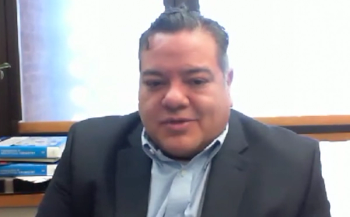Key Points
- Using Raman spectroscopy on fluid inclusions within olivine crystals, researchers found that magma storage becomes progressively deeper as Hawaiian volcanoes age—from shallow reservoirs (1–2 km) in active shield-stage volcanoes like Kīlauea, to deep mantle storage (22–30 km) in rejuvenated volcanoes like Diamond Head.
- The team used electron microprobe analysis and seismic data from broadband stations to validate their magma depth estimates, linking geochemical signatures and earthquake wave patterns to magma reservoir locations across different volcanic stages.
- The study concluded that the Moho (crust-mantle boundary) acts as a key control point for magma evolution as melt flux declines over time.
A recent study explored the application of Raman spectroscopy in understanding how magma storage depths change as Hawaiian volcanoes age. This study, which was published in the journal Scientific Advances, was conducted by a team of researchers led by Esteban Gazel of Cornell University (1). By combining Raman spectroscopy and seismological data to quantify the depths at which magma is stored across different evolutionary stages of Hawaiian volcanoes, the scientists uncovered new information about volcanic behavior and potential future hazards in the region (1).
Hawaiian volcanoes are among the most studied in the world because of their accessibility and continuous activity (2). The Big Island is known for having several active volcanoes and several climate zones (3). As a result, it is a place of interest for geologists and scientists to better understand volcanic activity. Traditionally, it has been theorized that as the Pacific Plate drifts northwestward over the stationary Hawaiian mantle plume, the rate of magma generation, or melt flux, declines (1). This shift results in profound changes to how, where, and in what volumes magma is stored and erupted.
To test this theory, Gazel and the rest of his colleagues investigated fluid inclusions using Raman spectroscopy. Fluid inclusions are tiny pockets of fluid trapped within olivine crystals, which are found in volcanic samples (1). The samples investigated in the study included volcanoes representing different stages in the Hawaiian volcanic lifecycle: Kīlauea (shield stage), Haleakalā (post-shield), and Diamond Head (rejuvenation) (1). By studying the pressures at which these inclusions formed, the team could infer the depth of magma storage at each stage.
From the results gathered in the study, the researchers concluded that magma storage becomes gradually deeper as volcanoes evolve. During the shield-building stage, exemplified by Kīlauea, magma reservoirs are stored at shallow depths, some as low as 1 to 2 kilometers below the surface (1). These shallow reservoirs are possible because of high melt flux, which helps maintain stable magma conduits from the mantle up to the crust (1).
However, in the post-shield stage, represented by Haleakalā on Maui, magma storage occurs both within the crust (~2 km) and deeper in the upper mantle, beneath the Moho boundary (~20 to 27 km) (1). Finally, during the rejuvenation stage, as observed in Diamond Head on Oʻahu, magma appears to be stored almost exclusively within the mantle, at depths ranging from 22 to 30 kilometers (1). This mantle-dominated storage suggests that the melt is no longer able to establish shallow reservoirs, potentially limiting eruptive activity but increasing complexity in forecasting volcanic behavior.
As part of the study, the researchers also used electron microprobe analysis to analyze the olivine crystals and determine their elemental composition. These detailed analyses helped ensure that the fluid inclusion data were tied to specific zones within the crystals, reinforcing the reliability of the barometry results (1).
The study’s findings were confirmed by the seismic data from four broadband stations. These four broadband stations across the Hawaiian Islands include near the Halemaʻumaʻu crater on Hawaiʻi Island, Mauna Kea, Haleakalā on Maui, and Diamond Head on Oʻahu. These broadband stations captured P-wave arrivals from earthquakes with magnitudes above 5.8 and various epicentral distance (1). Using these data, the researchers could refine models of crustal thickness and seismic wave behavior beneath the volcanoes, which corroborated the magma storage depths inferred from the fluid inclusion data (1).
From this research, the scientists were able to conclude that Moho, which is the boundary between the Earth's crust and mantle, acts as a major control on magma evolution in aging volcanoes (1). As the melt flux decreases, the Moho becomes the boundary controlling melt stagnation and evolution (1). This insight could be pivotal in improving volcanic hazard assessments for older Hawaiian volcanoes, where deeper and less accessible magma bodies may complicate forecasting future eruptions.
This research sheds light on the complex dynamics of hotspot volcanism, revealing that as the Earth's plates shift, so do the behaviors of the volcanoes above.
References
- Gazel, E.; Dayton, K.; Lianh, W.; et al. Crustal to Mantle Melt Storage During the Evolution of Hawaiian Volcanoes. Sci. Adv. 2025, 11 (20), adu9332. DOI: 10.1126/sciadv.adu9332
- Wetzel, W. Analyzing Hawaii’s PTA-2 Drill Core With LWIR and SWIR Spectroscopy. Spectroscopy. Available at: https://www.spectroscopyonline.com/view/analyzing-hawaii-s-pta-2-drill-core-with-lwir-and-swir-spectroscopy (accessed 2025-08-04).
- Meet Hawaii, Hawai'i Island Fact Sheet. Meet Hawaii. Available at: https://www.meethawaii.com/media-room/hawaiian-islands-fact-sheets/hawaii-island/ (accessed 2025-05-06).





